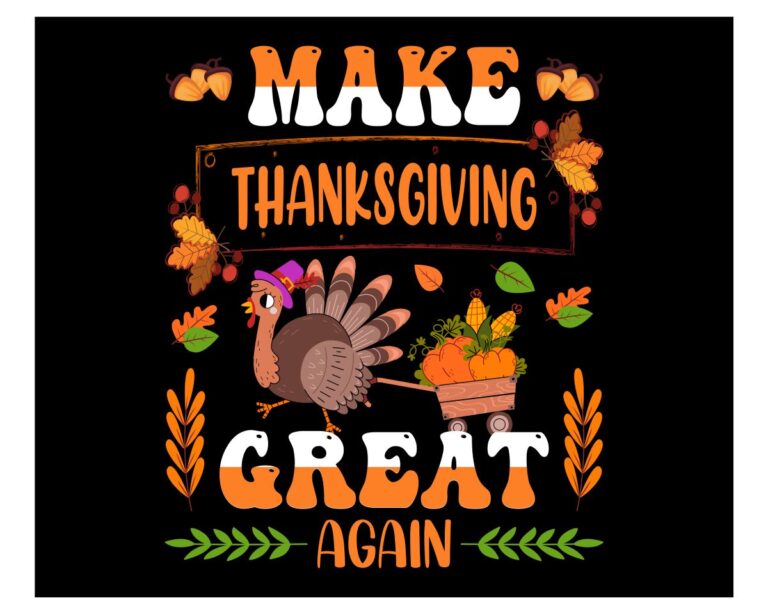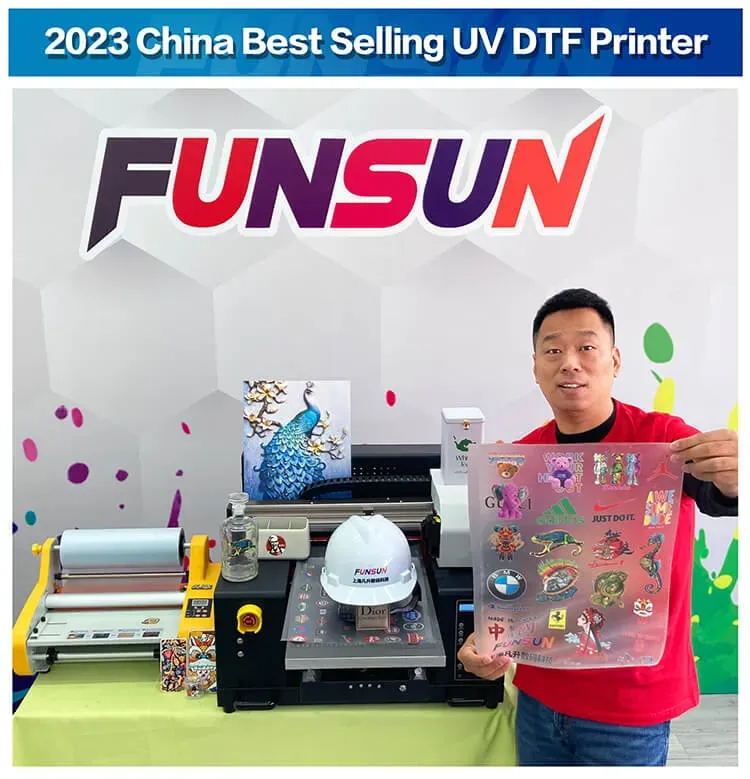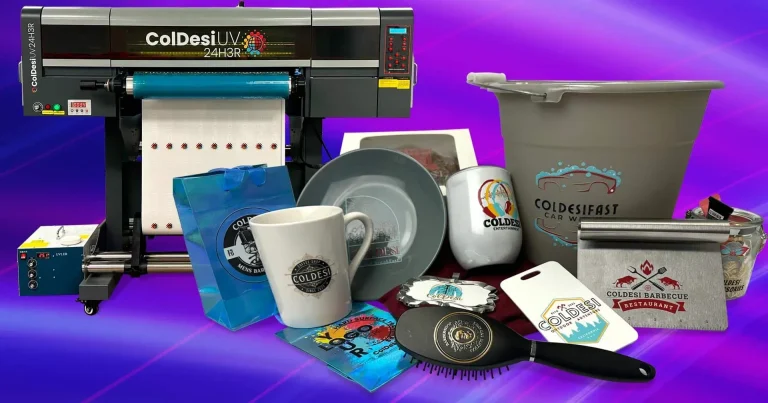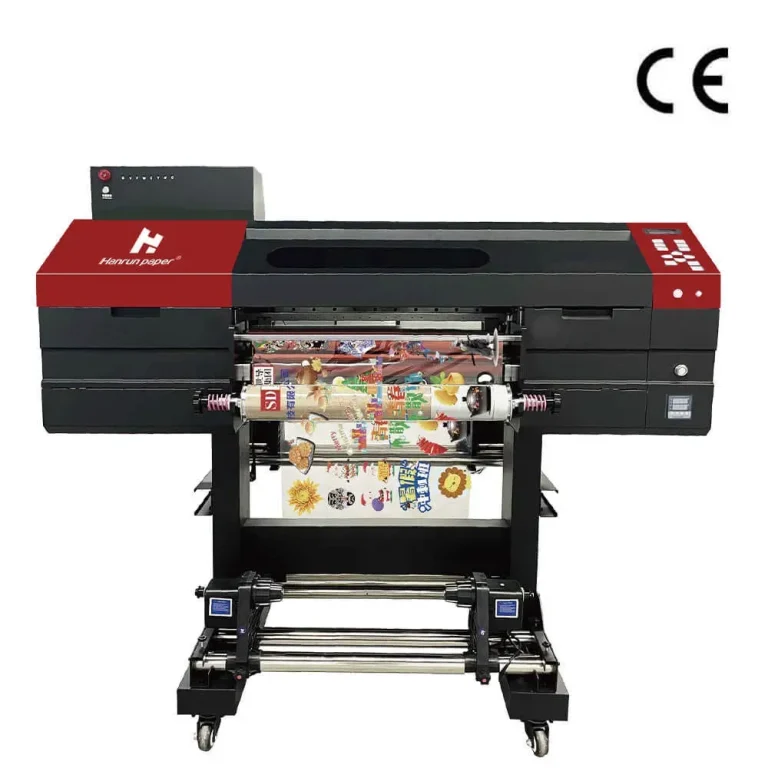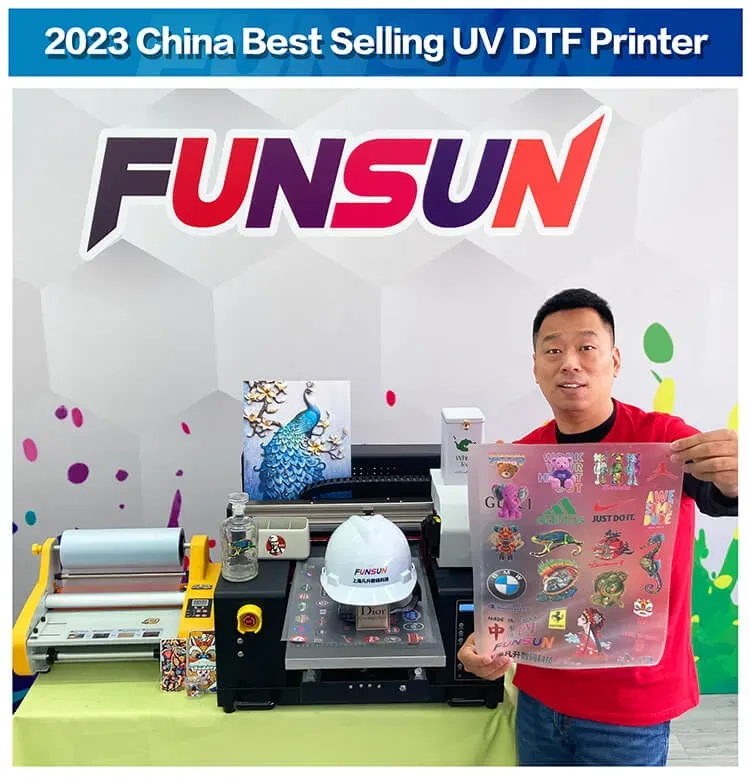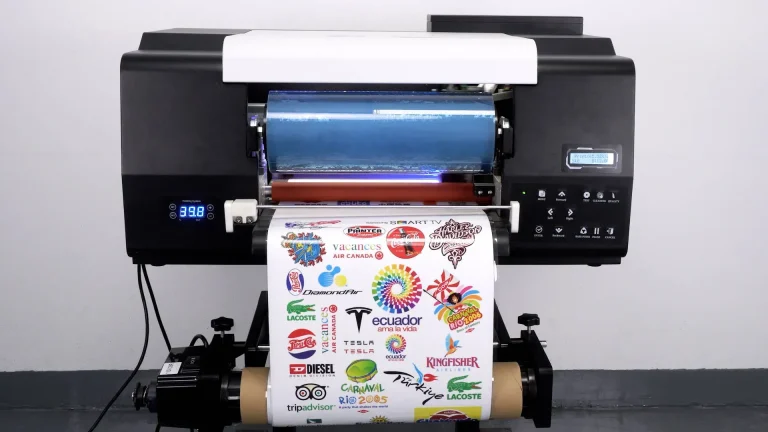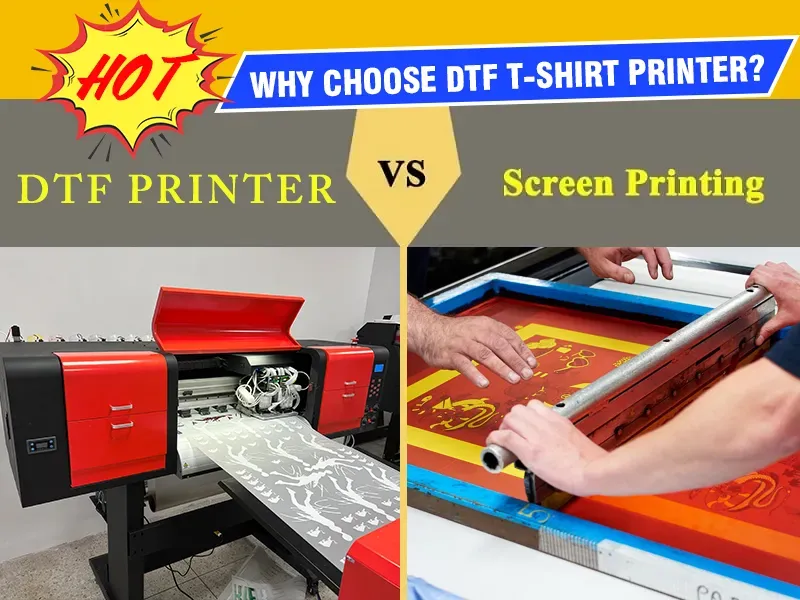
In the world of customized printing, understanding UV DTF vs. screen printing is crucial for anyone looking to bring their designs to life. Each of these printing techniques offers unique benefits, appealing to various needs in terms of print quality, durability of prints, and operational efficiency. UV DTF printing stands out for its vibrant colors and ability to print on a variety of surfaces, while traditional screen printing is celebrated for its rich color saturation and cost-effectiveness in larger runs. This blog post will compare these two methods, helping you navigate through their distinctive features, so you can make an informed decision about which technique is right for your project. Let’s dive into the future of printing technologies and explore what sets UV DTF and screen printing apart.
When it comes to personalized printing processes, the debate between Direct to Film (DTF) and traditional mesh printing techniques remains a hot topic. Each method, whether it’s referred to as UV DTF or simply screen printing, brings its own strengths to the table, particularly in terms of the quality of print they deliver and the longevity of the designs. DTF printing utilizes innovative technology that allows for intricate, multi-colored designs on a variety of materials, whereas the classic approach of screen printing excels in producing bold and enduring prints for high-volume orders. Understanding these distinct printing operations will help you choose the right technique for your creative projects, whether that’s apparel, promotional materials, or custom items.
Comparison of Print Quality: UV DTF vs. Screen Printing
When assessing the print quality between UV DTF and screen printing, one cannot overlook the distinctive advantages each technique offers. UV DTF excels in its ability to produce vibrant, detailed prints that capture complex images with precision. This is largely due to the UV-curable inks that provide a glossy finish and an extensive color palette, enabling intricate designs to shine. On the other hand, screen printing is known for delivering bold, saturated colors, which work remarkably well for larger prints and solid designs. However, it may not handle delicate graphics as effectively as UV DTF, which could be a pivotal factor if the project requires high levels of detail.
The superiority of print quality is increasingly significant in markets demanding high-resolution imagery and brand quality. UV DTF printing has evolved to deliver results that are highly competitive with traditional methods, allowing for gradients and fine textures that enhance the overall visual appeal. Contrastingly, while screen printing remains a favored choice for its straightforward approach to color application, its limitations in capturing fine details can sometimes lead to less-than-ideal outcomes for complex artworks. Therefore, understanding the nuances of each method can play a vital role in selecting the best printing process for your specific design requirements.
Analyzing Durability of Prints in UV DTF and Screen Printing
Durability is a critical factor that impacts the longevity of prints and, subsequently, customer satisfaction. In UV DTF printing, the use of UV-cured inks significantly enhances the durability of prints, rendering them resistant to fading, scratching, and environmental stresses. This is especially important for items that will be subjected to rigorous use or exposure, such as outdoor apparel or promotional items. The resilience of UV DTF prints ensures that they maintain their vibrancy and quality over time, providing long-lasting visual appeal.
On the other hand, while screen printing also boasts commendable durability through the use of robust inks, it may not withstand the test of time as effectively as UV DTF, particularly when it comes to heavy washing or extreme conditions. Despite this, screen-printed items can still hold up well for casual use. Understanding how each method fares against time and elements can help users make informed decisions, especially when prioritizing the lifespan of their printed products.
Cost Efficiency: UV DTF vs. Screen Printing
Cost considerations are often paramount when choosing between different printing techniques. UV DTF printing, while requiring a higher initial investment due to the specialized technology and materials involved, can become more cost-effective for small to medium-sized runs. This advantage arises from its efficient setup and quicker printing times, making it a financially attractive option for businesses with diverse design needs and lesser order quantities.
On the flip side, screen printing tends to have a lower entry cost, making it appealing for larger orders with simpler designs that do not require extensive setup adjustments. However, the labor-intensive nature and the time required to prepare screens can lead to increased costs for smaller batches. A clear understanding of how each method’s cost structure aligns with project size and complexity will guide businesses in optimizing their print strategies without overspending.
Material Compatibility: Exploring the Versatility of UV DTF and Screen Printing
One of the standout aspects of UV DTF printing is its impressive versatility regarding materials. Unlike traditional screen printing, which is mostly limited to fabrics, UV DTF can print on a wide array of substrates, including plastics, metals, and even glass. This capacity allows businesses to expand their offerings significantly, catering to varied customer demands and unlocking new revenue streams. Such material compatibility opens doors to creative processes that are not feasible with conventional screen printing, making UV DTF an exciting option for innovative printing solutions.
Conversely, screen printing excels in its specialized application on textiles, particularly on natural fiber materials like cotton, where it achieves optimal adhesion and color vibrancy. However, this specialization restricts its usability when it comes to non-fabric surfaces. As such, businesses focused primarily on textile printing may find screen printing adequate, but those looking to diversify their product lines may need to consider UV DTF for its broader material compatibility. This understanding of material versatility will prove vital in aligning printing methods with the desired application and product range.
Emerging Trends in UV DTF and Screen Printing Technologies
The printing industry is witnessing exciting developments, particularly in UV DTF technology, which is gaining traction due to its rapid advancements. Innovations in ink formulations are broadening color gamuts and enhancing adhesion to various substrates, allowing for increasingly complex designs that were once arduous in traditional printing methods. This trend suggests a shifting landscape where UV DTF is not only an alternative but an evolving choice that aligns more with modern consumer expectations and versatility.
In contrast, screen printing remains a steadfast method within traditional markets, yet it is adapting to meet contemporary demands with the introduction of eco-friendly inks and sustainable practices. These innovations highlight the industry’s responsiveness to greater environmental consciousness among consumers. Both technologies, while distinct, are evolving to offer quality, efficiency, and sustainability, making it essential for businesses to stay informed about these trends to remain competitive in the marketplace.
Usability and Learning Curve in Printing Techniques
For many newcomers and small businesses, the usability of a printing technique can be a significant determining factor. UV DTF printing is often lauded for its user-friendly setup and straightforward operational process, allowing operators to execute designs quickly and make adjustments with ease. This aspect of UV DTF technology is particularly appealing for businesses with varied and frequently changing design requirements, as it minimizes the learning curve typically associated with more complex printing processes.
In contrast, screen printing is characterized by a more steep learning curve, requiring a deeper understanding of technical aspects such as color registration, appropriate ink selection, and drying times. For businesses aiming to produce high-quality designs consistently, mastering screen printing can be resource-intensive. As a result, newcomers might find themselves overwhelmed, which could lead to inefficiencies. By weighing the usability of each printing method, companies can better align their choice with their operational capabilities and training resources.
Frequently Asked Questions
What are the key differences between UV DTF printing and screen printing?
UV DTF printing utilizes ultraviolet-curable inks printed on a special film and is ideal for intricate, colorful designs. In contrast, screen printing involves pushing ink through a mesh screen, excelling in bold colors for larger prints but with limitations in detail. Understanding these differences helps in selecting the best technique for your needs.
Which printing technique offers better print quality: UV DTF or screen printing?
UV DTF printing stands out for its high-quality results, especially with detailed designs and gradients, due to its ability to achieve superb color accuracy. Screen printing, while excellent for vibrant and rich colors, may not capture intricate details as effectively as UV DTF.
How does the durability of prints compare between UV DTF and screen printing?
Both UV DTF and screen printing offer durable prints, but UV DTF prints exhibit superior longevity, resisting fading and wear from various conditions. Screen printing has a reputation for durability but may fade over time, particularly after multiple washes, making UV DTF a better choice for demanding applications.
What types of materials can be printed using UV DTF versus screen printing?
UV DTF printing is highly versatile, able to print on a variety of materials including textiles, metals, plastics, and glass. Screen printing, however, is primarily effective on fabric substrates like cotton, limiting its application range compared to UV DTF.
Which printing method is more cost-effective for small orders, UV DTF or screen printing?
Generally, UV DTF printing becomes more cost-effective for small to medium-sized runs due to lower setup times. In contrast, screen printing can be more expensive for smaller orders since it is labor-intensive during setup, making UV DTF a more budget-friendly choice for smaller quantities.
Is UV DTF printing easier to learn compared to screen printing?
Yes, UV DTF printing is typically more user-friendly, presenting a straightforward setup and faster printing process, suitable for beginners and small businesses. On the other hand, screen printing requires a better understanding of various technical aspects like color registration and ink drying times, which may be challenging for newcomers.
| Key Point | UV DTF Printing | Screen Printing |
|---|---|---|
| Introduction | A modern method using UV inks and film for vibrant prints. | A traditional printing method, pushing ink through a mesh screen. |
| Quality | High detail accuracy and color vibrancy. | Produces bold colors, but less detailed for intricate designs. |
| Durability | Resistant to fading and wear; very long-lasting. | Durable but may fade over time with frequent washing. |
| Initial Costs | Higher initial investment; cost-effective for small/medium runs. | Lower initial costs; expensive for smaller orders due to setup. |
| Efficiency | Quick turnaround; easy adjustments available. | Complex setup; less efficient for low volumes. |
| Material Compatibility | Versatile; works on textiles, metals, plastics, and more. | Limited to fabric substrates; excels on cotton. |
| Usability | User-friendly; minimal learning curve. | Requires skill; understanding complex techniques needed. |
| Current Trends | Rapid growth with color innovations; expanding market. | Stable in traditional sectors; eco-friendly inks emerging. |
Summary
In the debate of UV DTF vs. Screen Printing, each method has distinct advantages that cater to different printing needs. UV DTF printing stands out for its vibrant color fidelity and adaptability to various substrates, making it a top choice for smaller runs and complex designs. In contrast, screen printing remains the go-to for high-volume projects, especially where simplicity and cost-effectiveness are paramount. Ultimately, the right choice hinges on your specific requirements regarding design intricacy, order scale, and production capabilities, ensuring that you can successfully meet your project’s objectives.

